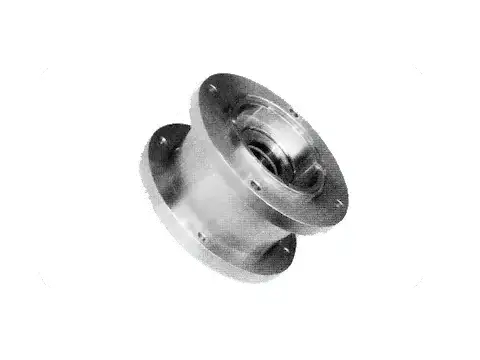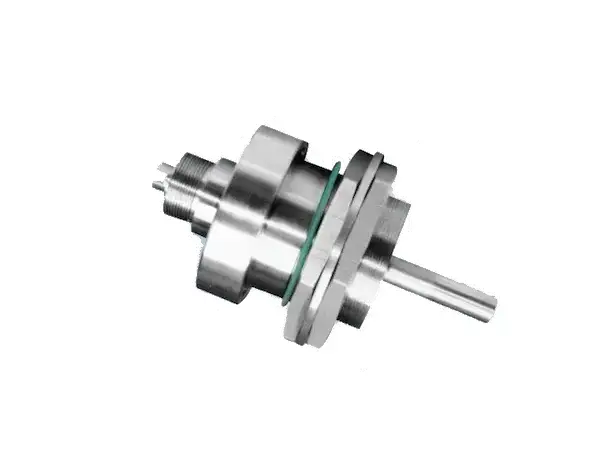Ensuring Performance in High-Viscosity Mixing Applications
In industrial mixing processes involving high-viscosity fluids, reliable sealing is a fundamental requirement. The dynamic conditions in such systems—marked by increased torque, intense shear stress, and fluctuating pressures—can rapidly degrade conventional sealing mechanisms. Choosing the appropriate agitator seal is not just a matter of component selection; it is a strategic decision that directly impacts equipment lifespan, process efficiency, and maintenance costs. For facilities handling adhesives, polymers, food pastes, or cosmetic formulations, effective sealing becomes critical to minimizing downtime and ensuring product quality.
Understanding the Demands of High-Viscosity Mixing
Process Characteristics and Operational Challenges
High-viscosity mixing processes often involve slow-moving agitators operating under significant load. The resistance to flow exhibited by viscous substances places greater mechanical stress on shafts and associated components, including seals. As the agitator rotates, these dense fluids exert radial and axial forces that can cause conventional seals to fail prematurely. Additionally, the mixing process often occurs under elevated temperatures and pressures, adding another layer of complexity to the sealing system.
Contaminants or abrasives present in the medium can also contribute to mechanical wear, while poor heat dissipation in viscous environments may accelerate thermal degradation of seal materials. In such scenarios, using a standard seal without adaptation to these conditions leads to frequent replacements and unplanned downtime.
The Role of the Agitator Seal in Process Integrity
The agitator seal acts as a barrier between the process medium and the external environment, preventing product leakage and contamination. In high-viscosity applications, maintaining this barrier becomes increasingly difficult due to the fluid's resistance and high torque demands. An effective agitator seal not only contains the product but also handles misalignment, vibration, and dynamic axial movement of the shaft.
Moreover, a well-designed agitator seal improves product safety, reduces energy losses, and supports compliance with industry standards—especially in food, pharmaceutical, and chemical industries where hygiene and containment are crucial.
Key Factors When Choosing an Agitator Seal
Seal Type and Configuration
Selecting the appropriate type of agitator seal is the foundation of a reliable sealing system. Common configurations include single mechanical seals, double mechanical seals, and split seals. For high-viscosity applications, double mechanical seals with pressurized barrier fluids are often preferred due to their enhanced leakage protection and ability to handle high loads.
Cartridge-type agitator seals are also popular because they come pre-assembled and pre-tested, reducing installation errors. Their modularity and built-in design elements improve alignment and reduce start-up risks in demanding applications.
Choosing the correct seal face materials—such as silicon carbide or tungsten carbide—ensures resistance to abrasion and thermal deformation. The use of heavy-duty springs and anti-rotation pins can further improve durability under constant stress.
Material Compatibility and Thermal Resistance
Agitator seals must be constructed from materials compatible with the process media. Elastomers like Viton or EPDM, and metal components like stainless steel or Hastelloy, are commonly used depending on chemical resistance requirements. High-viscosity processes often generate frictional heat, so thermal stability is another critical factor.
Seals exposed to high process temperatures may need additional cooling systems or specially engineered barrier fluids. Without adequate thermal management, seals can crack, deform, or fail entirely, especially under prolonged high-torque mixing.
Installation and Maintenance Best Practices
Precision in Installation
Proper installation of agitator seals is key to long-term performance. Even the most advanced seal can fail if it is misaligned, over-tightened, or installed on a damaged shaft. Following manufacturer specifications and using calibrated tools can significantly improve the success rate of initial installations.
Pre-installation checks should include shaft runout measurements, visual inspection of sealing surfaces, and verification of all associated hardware. Lubricating seal faces where recommended can prevent dry friction damage during startup.
Training personnel on correct installation practices and maintaining documentation of each sealing system helps establish best practices and avoid repeated errors.
Maintenance Planning and Predictive Monitoring
Agitator seal longevity is influenced not just by the initial setup, but by continuous maintenance and monitoring. Establishing routine inspection schedules helps detect early signs of wear such as minor leaks, unusual noises, or vibration.
Predictive maintenance technologies, such as vibration sensors and temperature probes, can provide real-time data to anticipate seal failure before it causes operational disruptions. In high-viscosity environments, such technologies become especially useful as seal wear may progress more rapidly under extreme conditions.
Maintaining a stock of critical spare parts and having seal refurbishment plans in place reduces downtime and improves response time during emergencies.

Design Enhancements for Viscous Applications
Flush Plans and Barrier Fluids
One of the most effective strategies to enhance agitator seal performance is the use of appropriate flush plans and barrier fluids. In double mechanical seals, barrier fluids act as a cooling and lubricating medium between seal faces, reducing friction and extending seal life.
For high-viscosity mixing, these fluids must be carefully selected to avoid cross-contamination with the product. Pressurized seal support systems also prevent ingress of the product into the sealing interface, minimizing clogging or hardening of viscous materials near the seal.
Optimizing flow rate, pressure, and temperature of the barrier system ensures consistent performance, especially during long operating cycles.
Dry Running Protection and Safety Systems
Agitator seals are susceptible to failure if run dry—particularly in viscous processes where dry running may not be immediately apparent. Including dry run protection devices, such as flow sensors or pressure switches, can automatically shut down the mixer or trigger alarms when abnormal conditions arise.
Incorporating back-up seals and containment chambers further improves safety, especially in processes involving flammable or toxic materials. These systems help isolate failure points and reduce environmental and personnel risks.
Industry Applications and Use Case Trends
Food and Beverage Sector
In the food industry, agitator seals are frequently used in processes involving sauces, syrups, or cream-based products. These applications demand sanitary-grade seals that are resistant to corrosion, temperature cycling, and product build-up.
High-viscosity ingredients pose a challenge to traditional seal designs. The use of hygienic agitator seal systems—often featuring CIP (Clean-In-Place) compatibility—has become a standard for maintaining product integrity and regulatory compliance.
Adhesives and Polymer Manufacturing
Adhesives, sealants, and polymer products involve extremely viscous materials that can cure or harden near sealing interfaces. In such cases, agitator seals with high torque ratings, self-cleaning designs, and advanced face geometries provide better resilience.
Using seals with scraper features or seals designed to operate in reverse pressure environments ensures prolonged performance, even under harsh chemical exposure and continuous operation cycles.
Choosing the Right Seal Partner
Value of Expert Consultation
Collaborating with sealing specialists who understand the intricacies of high-viscosity applications can significantly reduce seal-related failures. These experts can assist with process audits, recommend optimized seal configurations, and provide custom solutions tailored to specific industry needs.
Their understanding of evolving material technologies and international standards ensures that every agitator seal selection meets both operational and compliance requirements.
Our Unique Strength in Custom Sealing Solutions
Unlike standard sealing suppliers, our team offers tailored agitator seal systems specifically designed for complex, high-viscosity environments. We emphasize performance testing, material validation, and engineering support to help clients reduce downtime and extend equipment life.
With a robust inventory and fast delivery capabilities, we ensure that sealing components arrive when needed—helping clients meet their production targets without interruption.
FAQ
What is the best type of agitator seal for high-viscosity mixing?
Double mechanical seals are often the best choice for high-viscosity mixing due to their ability to handle pressure, torque, and leakage control. They also accommodate barrier fluids that reduce friction and heat generation.
How does a barrier fluid improve agitator seal performance?
Barrier fluids act as a coolant and lubricant between seal faces, preventing overheating and reducing wear. They also help to block process fluid ingress into the seal chamber, especially in double seal configurations.
What are common signs of agitator seal failure?
Visible leaks, unusual noises, shaft vibration, and increased operating temperatures are common signs. Regular monitoring can help detect these early and prevent catastrophic equipment failure.
Can agitator seals be customized for specific processes?
Yes, agitator seals can be tailored to specific industry needs. Factors like product viscosity, chemical exposure, pressure, and hygiene requirements can be addressed with custom materials, face designs, and support systems.
Table of Contents
- Ensuring Performance in High-Viscosity Mixing Applications
- Understanding the Demands of High-Viscosity Mixing
- Key Factors When Choosing an Agitator Seal
- Installation and Maintenance Best Practices
- Design Enhancements for Viscous Applications
- Industry Applications and Use Case Trends
- Choosing the Right Seal Partner
- FAQ


